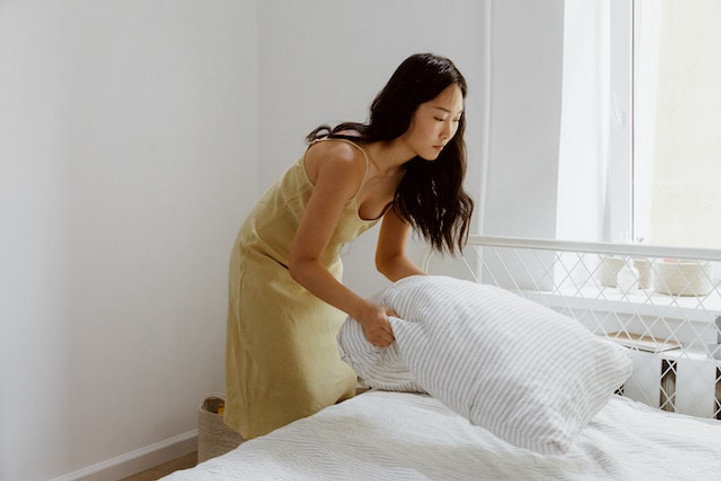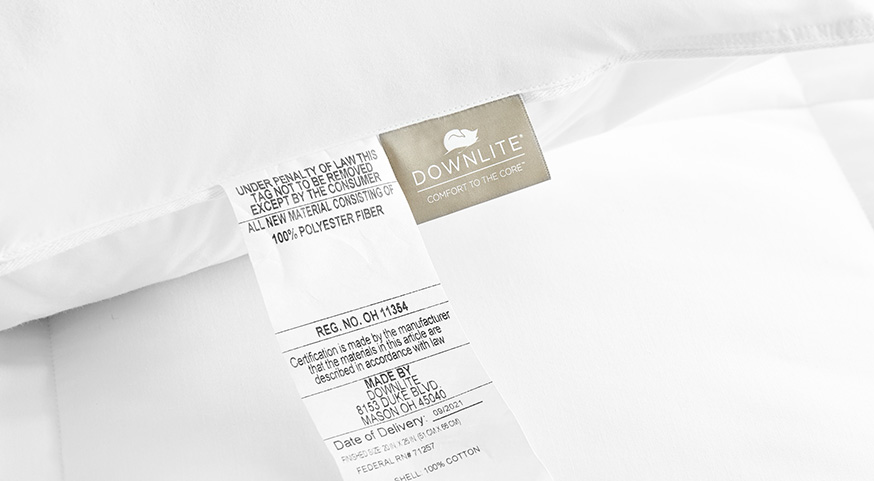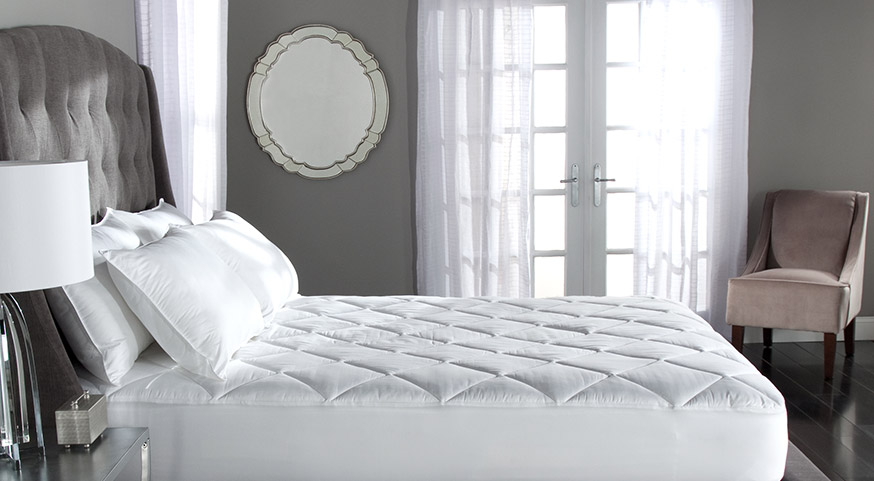Posted by Julie Carter on Jul 19, 2023
Bedding Cleaning Tips to Rest Easy & Keep Your Bedding Fresh
When was the last time you gave your pillowcase a proper cleaning? If it's been more than a week, brace yourself. A new report has uncovered a disturbing fact: pillowcases can harbor more bacteria than a toilet seat. We’re about to dive into the dirty details and equip you with practical tips to keep your pillow and bedding clean and fresh.
Pillowcases and Bacteria: A Nightmarish Study
A recent study shocked the bedding world and sleepers everywhere: pillowcases that haven’t been washed for one week can house up to 17,000 times more bacteria than the average toilet seat. Yes, you read that right! And after three weeks without being laundered, your pillowcase could accumulate 8.51 million germs, equivalent to 405 times the amount found in the kitchen sink. Your pillowcase could be hosting a thriving community of microorganisms, giving a whole new meaning to the term "sleeping with the enemy."
The Battle for Cleanliness: Pillowcase Care
Now that we're aware of (and disgusted by) the bacteria on pillowcases, it's time to take action. Regular washing is crucial. Dermatologists recommend washing pillowcases once a week to prevent dirt, oil, drool, and sweat buildup that can transfer to your skin, causing breakouts and irritation. Consider adopting the "two sets are better than one" strategy, allowing you to alternate pillowcases and extend their lifespan. It's cleanliness meets style—a win-win situation.
What Lies Beneath: The Impact of Bacteria on Your Pillows
While pillowcases steal the spotlight in the battle against bacteria, let's not forget about the pillows themselves. Sweat, hair, saliva, body oil, and dead skin cells can infiltrate the most protective pillowcases. These fluids and flakes create an environment for mold, mildew spores, allergens, and unpleasant odors to thrive. Washing your pillows helps eliminate bacteria, odors, and allergens that have made their way into the fill. But how can you keep your bedding fresh in between laundry days? One simple and effective strategy is to shower at night. Showering before bed minimizes the dirt, oil, and sweat that accompany you to sleep.
Pillow Washing Tips
It is recommended to wash your pillows every six months to maintain a healthy sleep environment. Semi-annual cleaning removes oils, bacteria, and stains that accumulate over time. Allergy sufferers or those with respiratory issues should wash their pillows more often, and consider an allergy-friendly, AAFA-certified pillow. Follow these effective cleaning tips to keep your bed clean and healthy and extend the life of your pillows:
Tip 1: Wash your pillows at home
Rely on your own laundry room and avoid the dry cleaner where harsh chemicals can damage the fill.
Tip 2: Add two pillows at a time
Using the buddy system helps keep the washing machine balanced. An unbalanced machine makes the cycle loud and may also prevent the machine from cleaning and draining properly.
Tip 3: Use a mild dish soap
We recommend adding 1 tsp of Dawn to the wash to help remove oils without damaging the pillow fibers. DO NOT USE laundry detergent or fabric softener, as they may weaken the materials and ruin your pillows.
Tip 4: Select the delicate cycle
Opt for the gentle cycle on your laundry machine to avoid damaging the pillow fill.
Tip 5: Keep it warm
Set the temperature to warm for the best wash. DO NOT USE hot water, as it can shrink the fibers and misshape your pillow.
Tip 6: Run an extra spin cycle
You want to remove as much excess moisture as possible, which leads us to…
Tip 7: Dry, dry, and dry some more
Drying is the most crucial step in cleaning a pillow – especially if it contains down or feathers. Pillows must be bone dry to preserve their intended shape and feel. Being completely dry also prevents a moldy smell. So don’t be afraid to run the dryer 2-3 times in a row, fluffing between each cycle. Select low heat and add a couple of dryer balls or tennis balls for fluffing.
Tip 8: Take extra care of your pillows between washings
Use a quality pillow protector and pillowcase to protect your pillow from moisture, stains, and allergens. Also, fluff your pillows once a week to maintain support and comfort.
Tip 9: Say goodbye at the right time
Replace pillows regularly to ensure optimal health, comfort, and sleep quality. With proper care, down pillows may last 5-10 years, while down alternative and synthetic pillows should be replaced every 2 years. Downlite provides quality down pillows, feather pillows, down alternative pillows, and hotel pillows for every type of sleeper. Check out our Pillow Buying Guide if you’re ready to swap out your old bedtime buddies for new ones.
With the knowledge and practical tips at your disposal, you’re ready to wage war against bedding bacteria. Safeguard your sleeping environment by protecting, fluffing, and laundering your bedding for a perpetually fresh and clean sleeping space. Turn the once nightmarish, bacteria-clad pillowscape into a refreshing dreamland for restful nights.
Photo by Ron Lach











